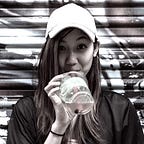Research Methods & Processes — Examples in Practice (10/16)
On Monday, Julina Coupland, a CMU graduate, guided us on a tour about research methods and design in the real world. She went through her professional work history to give us an idea of what design research looks like in practice and what career paths that designers can venture into.
Julina worked at several companies after graduating with her Masters. She went over her work regarding design consulting to product managing. Throughout her work experience, she utilized various methods of research. One of the ways she viewed research separated the method into three components: Discovery, Ideation, Iteration. While conducting research, she noted that this process is not linear, you could jump back and forth between these components.
During her consulting professions, Julina created the ideal experience for possible users. To do this, her team recommended aspects such as the color of the walls, the workplace environment, sounds and more. Here she focused on discovery and ideation. During a different role as a product analyst at FinTech, she focused mostly on the iteration phase, working on the final product and developing it. In contrast, Julia also worked as a start up in the product development division where she prototyped-tested. This focused mainly on discovery.
Julia also brought up her longest work experience at UPMC Enterprises, which encased all three components. As this was her longest role, she transitioned from senior designer to lead designer to product manager and started with responsibilities such as UX Research and UI design and tackled on more such as product strategy, industry research, business planning and team development. This can give you an idea of how you can grow in roles throughout your career.
She went over a few activities to incorporate research and receive feedback from patients. Some exercises were familiar such as card sorting and 1:1 interviews. She noted that the way to go about these decisions were determined by what kind of information should be collected. Were they looking for a brief overview or a detailed experience? For example, for 1:1 interviews, interviews that go on for an hour may provide more in-depth information than four 15 minute interviews.
In the second half of the class, Silvana reviewed some details of what an “academic poster” looks like in preparation for our last project. The structure and style of your poster should relate to your project, therefore an academic poster should communicate professionally. What are the goals and purposes of an academic poster? Please see below as taken from Silvana’s slides.
The content and structure of your poster will differ from field to field. As this is a design class, we will have more creative freedom but the key questions will remain the same. What is the project? Why is this important? Who is the audience? Who was involved in the project? How do you learn what you need to do? Lastly, what are the outcomes?
As you might already be aware of, there are elements to consider such as the legibility, hierarchy, white space, and colors. How will you capture and keep your audience’s and keep it?
Silvana brought her own poster as a demonstration. She mentioned that her poster was just a model and not a finished product. Through this process of reworking and determining what was the right fit, she created a model that successfully met her criteria and displayed her work clearly. Hopefully, this overview in class today was a starting point for your projects. Please feel free to reach out to any of us during our office hours for more help.
